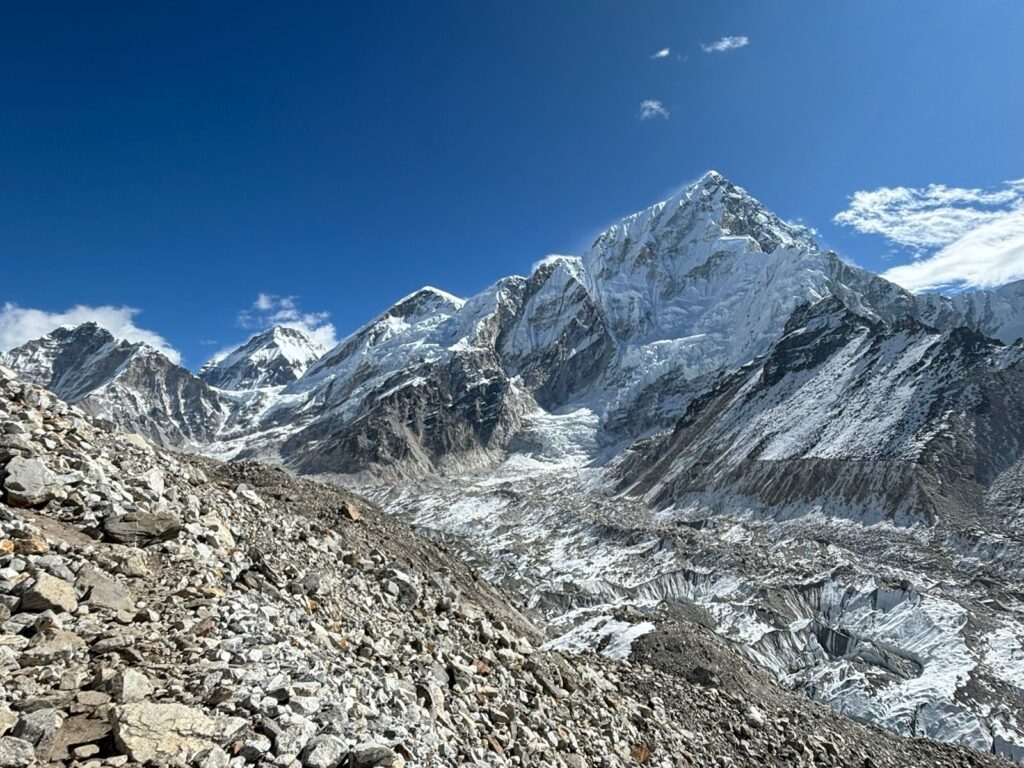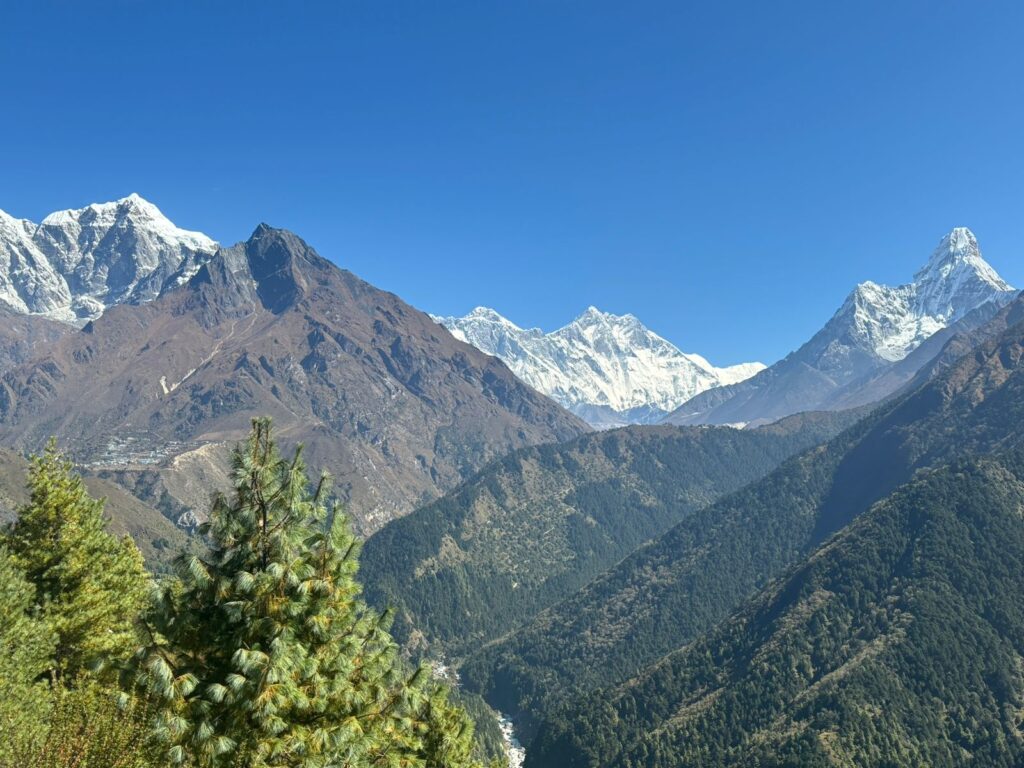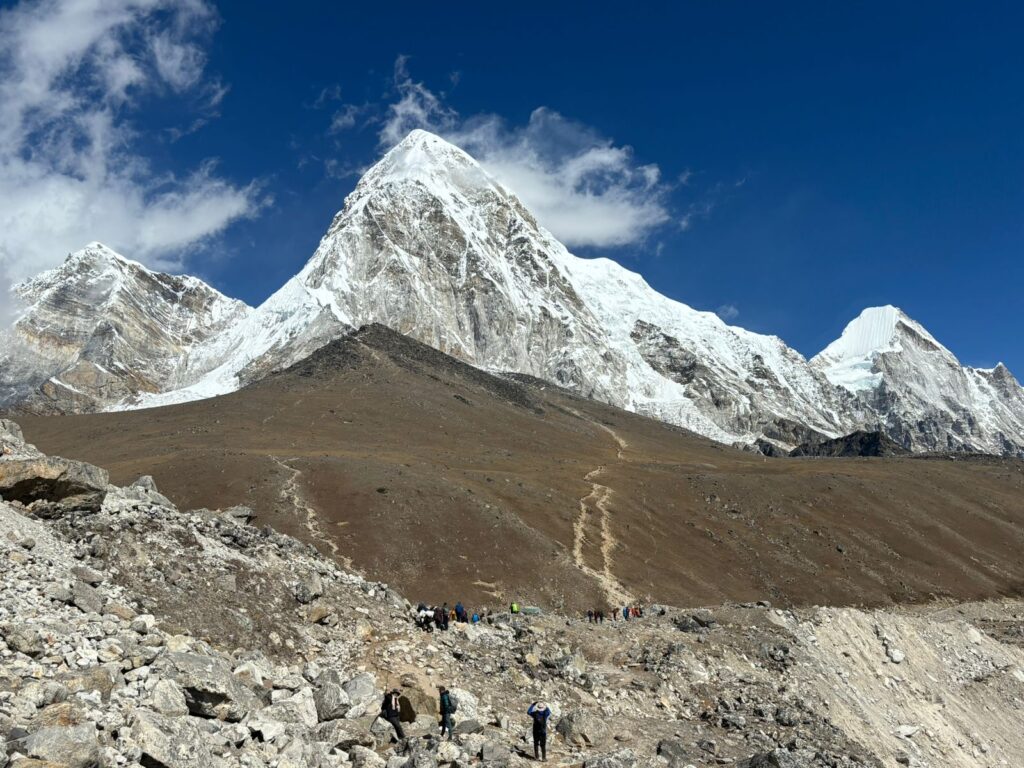Mount Everest is among the most suitable places to visit by climbers, although it is the highest mountain in the world. Standing at 8,848.86m above sea level it has a strong pull on many from all parts of the world.
Apart from adventure, a climb to the highest peak has something important to tell about human will and the policy of sustainability. For most people, the title of Everest is decisive in the field of mountaineering.

For a long time, tens of thousands of people have been attempting to endeavour to ascend to it — but achieve the top while tragic public deaths transpire. They have already documented about 6,000. Some of them have to cope with freezing temperatures, snow slides, altitude sickness and the like.
However, there are such risks present in attempts to climb the Everest and apparently there is demand among individuals who will want to dominate the highest point in the world.
How many people have climbed Mount Everest?
Centuries have gone by since Mount Everest has remained an interesting expedition and climb to mountain lovers. Despite the string of formidable challenges that are in being at its summit, the venture attracts adventurers from every corner of the globe. It is known as Sagarmatha by the Nepalis and Chomolungma to the Tibetans, yet this mountain has worked its way into becoming an irresistible lure.
Attempts of Early Years – 19th and Early 20th Century
- 1841: Everest first came into the eyes of the British survey team as being above sea level height.
- 1865: Known officially as Mt. Everest and named after a British surveyor, Sir George Everest.
- 1921: The first British expedition under George Mallory for attempted studies of the routes to the top reached 7000 meters without attempting to reach the summit.
- 1922: Some months later a party hovered at 8302m; the first to fly over 8 000 meters.
- 1924: George Mallory and Andrew Irvine made the final climb of the mountain. They disappeared, up to this very day and no one would be in a position to explain their fate conclusively.
- May 29, 1953: The first successful climb up Mount Everest via South Col was done by New Zealander Sir Edmund Hillary with Tenzing Norgay, Nepali Sherpa. They conquered the summit at approximately 11:30 AM local time.
Growth of Climbing Activity: 1950s-Present
Following the successful ascent in 1953, interest in climbing Everest grew rapidly:
- 1960-1970s: Many groups repeated this success; the first north-side successful ascent was made by a Chinese team in 1960.
- 1978: The first two men who climbed the peak without the help of this gas supply were Reinhold Messner and Peter Habeler.
- 1980s-1990s: This mountain saw any number of famous ascents especially in winters and solo. Sherpa Ang Rita completed the first ten heights in peaks between 1983 and 1996.
Modern Commercial Climbing Boom – 1990 to the present
Commercialization of Everest really got seriously underway at the turn of the 20th century, whereby:
- 1996: Many killings during this season exposed the risks inherent in ascending Mount Everest. This same season was at the heart of Into Thin Air by Jon Krakauer, a book that became a best seller.
- 2000s-present: The number of climbers dramatically rose upwards. By 2021, over 10,000 had reached the summit, many of whom had made numerous ascents.
- Climbers of various nationalities have, to date, made more than 10,000 ascents.
- Sherpas have indeed been invaluable assets on most of these expeditions. Logistically and safety-wise, handling on the mountain was just impossible without them.
How many people climbed Mount Everest without oxygen?
Climbing Mt Everest without supplemental O2 is something special attempted and achieved by a few elite climbers across the world. It draws its historic backdrop from 1978. When Reinhold Messner and Peter Habeler hit the headlines by becoming the first climbers to reach the summit of Everest not aided by oxygen tanks.
Their ascent on May 8 presaged the accepted belief at that time that human beings could not survive at that high altitude without supplemental oxygen. They marked one of the great milestones in mountaineering history.

Of course, over the years, many of the best climbers have repeated Messner’s feat. Ang Rita Sherpa- also known as “The Snow Leopard”-managed an incredible ten trips to Everest’s summit with no supplemental oxygen from 1983 to 1996- a really outstanding demonstration of acclimatization ability.
In this direction, Melissa Arnot was the first American woman to have pulled off such a wonderful feat of climbing successfully without supplemental oxygen in 2016, and the interest in no-supplemental-oxygen climbing of the mountain hence continued to show an uptick. Indeed, other climbers more recently are able to perform the same feat without it with equal difficulty, including multiple summits by Adrian Ballinger.
Till now, around 200 climbers have summited without supplementary oxygen. Among those are a number of people with different nationalities who dared to enter this extreme sport. That situation over 8,000 meters is known as the “death zone,” where the body suffers because of the lack of oxygen. Severe risks in altitude sickness and cognitive impairment make these climbs particularly hazardous.
How many went to Mount Everest only to die?
Climbing Mount Everest is hazardous. Too many climbers have lost their lives trying to reach the top of it. Present estimates put the number of deaths on Mt. Everest from the initial successful ascent in 1953 until today at more than 340. That would include those who died on the way up. Climbers who reached the summit and then died on the way down. All of those who died from a variety of hazards while climbing at altitude.
That would give a fatality rate on Everest of the order of 2% of all climbers, which, put into context with other killer mountains like K2 or Kangchenjunga, is not exceptional. Considering how popular and easy it is to access Everest. The number of deaths occurring there is tragic. It is about 3.2 per year on average, under conditions and with a certain number of people attempting to climb; it’s an extremely variable figure.
In 2023, it was reported as the deadliest year in Everest’s history, with 17 deaths during this climbing season. Such an increase in deaths brings questions of overcrowding. Especially in those periods of good weather when many climbers attempt to make it to the summit. During other years, too, big disasters contribute to the high number of fatalities. For example, in 1996, 15 climbers died because of a severe storm.
Causes of death differ on Everest, but most often include avalanches, falls, altitude sickness, and exhaustion. Many of the deaths occur above 8,000 meters or 26,247 feet in the so-called “death zone,” where the level of oxygen is too low to support human life for long. Climbers also run an extreme risk of HAPE and HACE, capable of fatal outcomes unless immediate descent is made.
Even though improvements in equipment and support systems have been made, climbing Everest is dangerous. The fact that more people are trying to reach the summit each year. The complex nature of the safety and rescue operation makes it more difficult to climb the mountain. Along with the continued improvement in climbing technology and the continued aspiration of people to master Everest, the preparation of climbers for extreme conditions is necessary.
How many climbed Mt. Everest in the year 2024?
By the end of the 2024 climbing season, at least 600 climbers will have summited Mt Everest on May 30, 2024. This figure comprises various other expeditions that were granted the recommendation to ascend the mountain.
The government of the Nepalese Republic issued 421 climbing permits for this year’s Everest event, including both male and female climbers. The periods of climbing began on April 7 and ended on May 31, 2024. Amazingly, summits were still being made in mid-May, and at least 52 climbers summited on May 12, 2024.

The summits will remain ascending, with many more trying to make a summit before the end of the season. All in all, with all successful climbing stints, put aside, it only means that risks related to climbing at high altitudes are very much still around, perhaps.
How many blind people climbed Mount Everest?
By now, two popular blind climbers have succeeded in reaching Mt. Everest. Amongst them, Erik Weihenmayer did it on May 25 in 2001. His ascent made him not only the first blind man who had stood at the top of Everest but also brought him a great deal of media attention. Including the Time magazine cover feature. His achievement continues to inspire many.
The second blind person to reach the summit was Andy Holzer in 2017. An inspired read about Erik Weihenmayer’s climb thrust him to make his own journey to the top of Everest- a feat that shows more and more that blindness does not prohibit individuals from doing great things in mountaineering. Both have turned into inspirational figures in the climbing world, promoting inclusivity and beating perceptions about disabilities.
Of late, the Nepalese government has forbidden blind climbers from attempting to climb Everest in light of new regulations that have been put in place in an effort to make the mountain a safer place. This decision has fired much debate within the climbing fraternity, for it cuts off opportunities for climbers with disabilities looking forward to taking up the challenge of Everest.
How many from Britain have climbed Everest?
As of 2024, no figures are kept of British climbers who have summited the mountain. But probably over one thousand British climbers have reached its summit since the first successful ascent in 1953 by Sir Edmund Hillary and Tenzing Norgay.
The history between the British and Everest started with a few early expeditions in the 1920s. When the very first attempt was undertaken by Angstsers in 1921, further expeditions marked real milestones, including well-known attempts by George Mallory in 1924. The successful ascent in 1953 was undertaken by a British team, a moment of vital importance in the history of mountaineering.
Yet, British climbers are still achieving incredible feats on Everest. For instance, Kenton Cool last May 2024 reached the top for a record-breaking 18 times and became the non-Sherpa climber with the highest number of ascents at the top. It reflects enterprise and success continuously by British climbers on Everest.
Hundreds of climbers attempt to reach the summit during the small windows of good weather. Usually, during the climbing season, from all around the world, a significant portion of those climbers hail from the UK. For example, in 2024, about 414 permits were issued for Everest by the Nepalese government, and there was pretty good interest and participation by British mountaineers, amongst others.
How many people can climb Mt. Everest at a time?
While there was never an exact definition as to the amount of people allowed on Mount Everest at any given time. Recent developments have come to determine that limits by the Supreme Court in Nepal have been placed upon the number of permits to climb the mountain.
No formal rule has been considered, although the order of the court made it clear that regard should be paid to the carrying capacity of the mountain and commended the Management on its concern for the environment.
In 2023, Nepal issued a record 478 permits for Everest, and at least 403 permits have been issued this year through mid-May. Many hundreds of climbers usually attempt the summit in favourable weather windows, and crowding is possible this climbing season. Indeed, as far back as 2019, there was a serious traffic jam. From 33 to 36, climbers tried to reach the summit on the same day, creating hazardous conditions.
It’s still hammering out new regulations that center on how to make the mountain safer. Reduced congestion is now a key factor during peak climbing seasons. It is an issue that will require knowledge of the maximum number when adequate assessments and consultations with stakeholders are made.
How many people have disappeared while climbing Mount Everest?
This year, the Mt Everest climbing season has reported three missing climbers so far. Of them, one British climber and one Nepali guide went missing in the collapse of a snow mass near the Hillary Step while coming down from the summit on May 21. They had disappeared just some hours after they climbed to the summit with the guiding company 8K Expeditions.
There were also reports at the start of May that two Mongolian climbers – Usukhjargal Tsedendamba and Prevsuren Lkhagvajav – went missing after attempting to summit without guides. The last contact with them was above the South Col.
Through 2024, it is estimated that a cumulative total of 6,664 different climbers summited Mount Everest. Many people summited more than once, and one record could be Kami Rita Sherpa, which had 29 summits. The rest of the climbers also added to the number; for example, Kenton Cool recently completed his 18th ascent.
The repetition of Everest has already become common nowadays not only among the veteran climbers but also among the professional guides. Lots of climbers return to Everest not for personal records alone but to lead other climbers to the top.
In support, Dorji Gyaljen Sherpa has summated 24 times, showing how Sherpas commit to helping international clients make climbs.
How many men/women climbed Everest?
By 2024, 6,664 climbers summited Mt. Everest. The estimated breakup of the climbers is that about 5,900 are males, while the females are 740.
The first woman who climbed Mt. Everest was Junko Tabei from Japan, who summated on May 16, 1975. Since then, many women summated Mt. Everest, following in her footsteps and setting new standards for women mountaineers.
Of these, an impressive list of climbers highlights the following: Lhakpa Sherpa, who is a woman, summited Everest a record ten times; Melissa Arnot, the first American woman to summit Everest without supplemental oxygen.
While general documentation for Mount Everest’s northern approach to the summit is not impressively kept, rough counts estimate that about 1,200 have summited via the northern route since it opened to foreign climbers in the early 1980s.
How many people have climbed Everest from the Northern Side?
The northern side, which is approached from Tibet, has always been less popular for a number of reasons: it has more stringent regulations and is more financially costly regarding climbing permits. That would mean that in 2024, only about 50 permits were issued to the foreign climbers who attempted the ascent from this side- a far quieter climb on this side. As opposed to the thousands of climbers usually gathered on the southern side each spring.
Indeed, it was the north face that saw the first successful ascent via Chinese in the year 1960. So far, a few expeditions have been pushed on this north face by popular climbers like Reinhold Messner. Due to steep routes, the north is claimed to be technically challenging and unfavourable due to its harsh weather conditions.
Send an Enquiry
Error: Contact form not found.
© 2025 - Himalayan Trekking and Tours (P) Ltd. All Rights Reserved.

